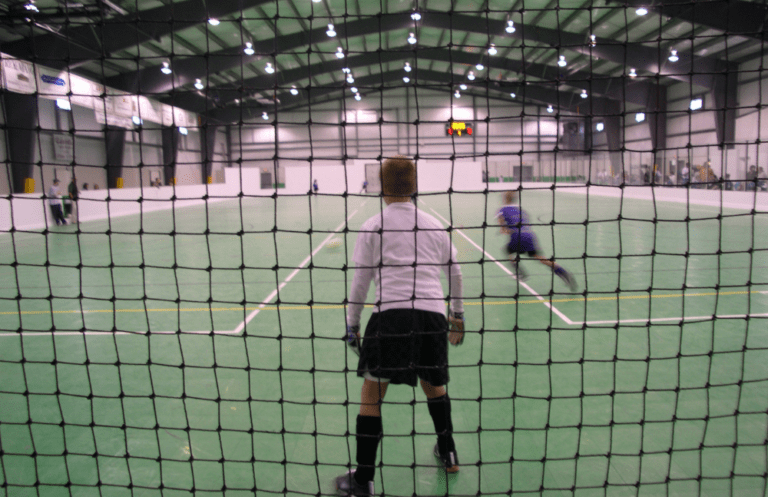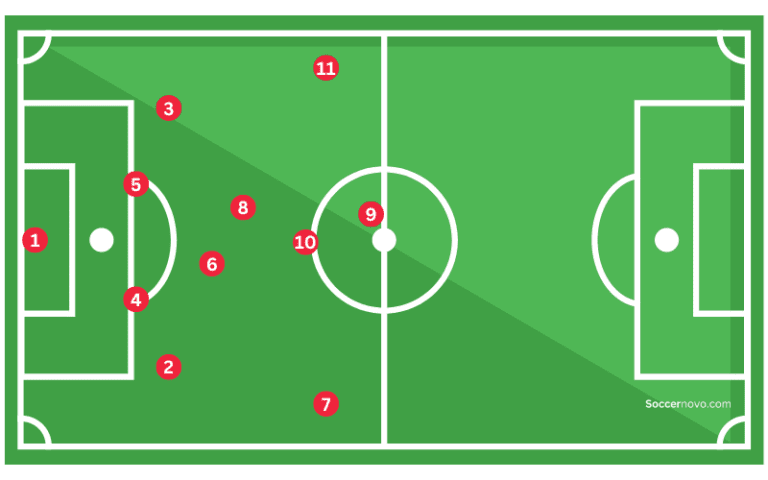Does Height Matter in Soccer? What the Data Says

While soccer may be a game of skill, speed, and strategy, height still plays a surprising role—so how do the pros measure up? And, does any of it matter?
Quick Takes:
- Professional male players average 5’8″ to 6’2″, varying by position
- Professional female players average 5’5″ to 5’8″, also varies by position
- Goalkeepers tend to be tallest (6’2″-6’4″), while midfielders are typically shorter (5’8″-5’11”)
- Physical advantages exist for both tall and short players, but technical skill matters most
Does height matter? Soccer stands unique among professional sports where height doesn’t have a huge impact.
While NBA courts are dominated by 6’6″ giants, soccer fields showcase the artistry of both 5’7″ magicians like Lionel Messi and towering 6’4″ goalkeepers.
Position Matters: The Height Breakdown
| Position | Average Height |
|---|---|
| Forwards | 6’0″ to 6’2″ |
| Midfielders | 5’8″ to 5’11” |
| Defenders | 6’0″ to 6’2″ |
| Goalkeepers | 6’2″ to 6’4″ |
- Goalkeepers (6’2″-6’4″): Extra height helps cover more of the goal, though exceptional shorter keepers like Pedro Benítez (granted this was the 1930s) prove technique trumps size
- Defenders (6’0″-6’2″): Aerial ability helps win headers, but mobility and positioning matter more
- Midfielders (5’8″-5’11”): The engine room of the team often features shorter players who excel at quick turns and ball control
- Forwards (6’0″-6’2″): While aerial presence helps, dynamic movement and finishing ability are key
The Short Player’s Edge

- Low center of gravity: Shorter players tend to have a lower center of gravity, which can make them more agile and able to change direction very quickly. This can be a huge advantage when dribbling, making quick turns, and avoiding aggressive defenders.
- Greater speed and acceleration: Shorter players may be lighter and have shorter strides. This can be advantageous when making short sprints or bursting through small gaps in the defense. This is especially true in the midfield area of the pitch.
- Better ball and body control: Shorter players may have better control of the ball, as they may have a smaller area to cover with their feet.
- Ability to hide behind defenders and make cleaner runs: Shorter players may be able to hide behind taller defenders, making it more difficult for opponents to mark them.
Tall Player Advantages

- Aerial ability: Taller players have an advantage in the air, which can be useful when defending against crosses, taking corner kicks, or scoring headers.
- Physical presence: Taller players often have a larger frame and greater physical strength, which gives them an advantage in physical one-on-one battles.
- Long-range passing and shooting: Taller players usually have a longer range of passing and shooting. They may be able to hit long passes with more accuracy or shoot from farther out, making them more of a threat from a distance.
Coach’s Corner: As both a parent and youth soccer coach, I’ve seen firsthand how focusing on size can be misleading. Some of the shortest midfielders consistently outplay taller opponents through superior ball control and vision.
Sideline Insight: The most exciting development I’ve witnessed is how U.S. youth programs are finally prioritizing skill development over physical size in player selection. This shift aligns with global soccer standards.
Parent’s Perspective: Having watched my own kid play, it’s remarkable how early size advantages often disappear by the teenage years as technical skills and game understanding become more crucial.
Final Thoughts
Unlike basketball’s famous saying “you can’t teach height,” soccer thrives on skill over size.
While being 6’8″ might be a golden ticket in the NBA, soccer celebrates diversity in physical attributes.
What truly matters is the dedication to skill development, tactical understanding, and mental fortitude.
The beautiful game has proven time and again that greatness comes in all sizes – from the diminutive brilliance of Messi to the towering presence of Peter Crouch, both leaving their mark through technical excellence rather than their height measurements.
Soccer proves that success comes in all sizes.

Written By: Beau Bridges
Beau is the founder of SoccerNovo, dedicated to helping players and parents navigate the youth soccer landscape. As a former youth coach and soccer parent, he shares insights on player development, recruiting, and the ever-evolving soccer scene in the U.S.
Let’s connect





